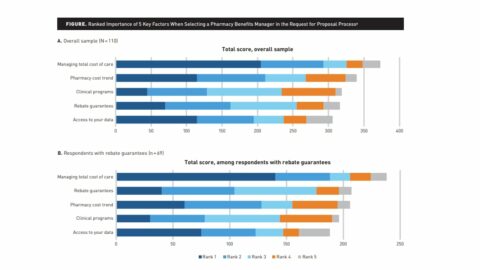So I managed to screw up at least two things yesterday. First off, I misspelled Leana Wen’s name. Second, I included the wrong link in discussing Wen’s op-ed. The right one is here.
I regret the errors. I don’t regret my take on the ridiculousness of Wen’s argument, though.
I remain all-in on the CMS patient listening sessions around the IRA.
I still believe it to be a dumb and uniquely unhelpful way of gathering patient input, but my assumption has been that the whole process is unintentionally unhelpful. The government, my thinking went, was just moving too fast to be thoughtful.
But I’m now open to entertaining the theory that CMS is intentionally making the patient input process lousy. I asked them when they planned on making replays of the sessions available, and I heard back yesterday that the answer seems to be “never.” They told me they’d release “redacted transcripts” — no idea when or where or what will be redacted — but no recording of the session.
So there’s no good way to go back and amplify or analyze patient input. Speakers get three minutes to make their case in a tiny Zoom box and then … poof. No questions. No feedback. No replay. No going back in a year or two to see which speakers are playing the role of Cassandra. The input becomes, literally, invisible.
And that is so unhelpful that I have to at least consider that maybe Hanlon’s razor is not actually at work here.
***
Anyway: yesterday was Enbrel day. I’ve archived the public statements here, because someone has to do it.
STAT covered the Public Citizen argument, raised in the listening session, that CMS should go all-in on price controls for the drug because of its extended time on the market. But neither Public Citizen nor STAT mentioned an obvious point: the law already calls for massively larger price controls for “long-monopoly drugs.”
The White House, too, took the opportunity to talk about the drug, once again giving chapter and verse about the manufacturer revenue and the like and mentioning not one word about value.
Also interesting: Press Secretary Karine Jean-Pierre’s soapbox moment included a reference to a patient who spoke at the listening session, suggesting that there is a coordinated effort — using the listening sessions — to push the message of the day.
***
Today is Entresto day. I’ll be out with transcripts for that one tonight, so you can just bookmark the transcript archive if you want.
This is a weird one: STAT published a First Opinion making the case for boosting innovation in gene and cell therapy manufacturing on the assumption that driving down the cost of manufacturing will drive down prices. I don’t want to be the one to say it, but someone is going to have to tell her that medicines are generally now priced to value, not to COGS. (I mean, improving manufacturing is a laudable goal, but I don’t think that’s going to change the pricing paradigm in gene therapy.)
A bunch of Republican Senators is pushing CMS to walk back a plan to change how it calculates “best price” in the Medicaid drug program. This is one of those boring-but-important topics that I’ve been ignoring, but it’s time to catch up. (I’m using this Avalere piece as a cheat sheet.)
When the headline tells the whole story: “The ‘Ozempic Effect’ on Wall Street Has Gone Overboard” (from the Wall Street Journal).
If you’re curious what the WSJ is talking about, Axios this morning is calling Ozempic “the Taylor Swift of the stock market.”
This is a uniquely insight-free letter to the editor to the Washington Post. Flagging here because it maybe exposes a blind spot in the WaPo’s editorial page’s ability to think clearly about drug pricing.
“The system sucks worse than ever.” — Zeke Emanuel, via the Washington Post. I mean, what’s to argue?
If this email was forwarded to you, and you’d like to become a reader, click here to see back issues of Cost Curve and subscribe to the newsletter.





